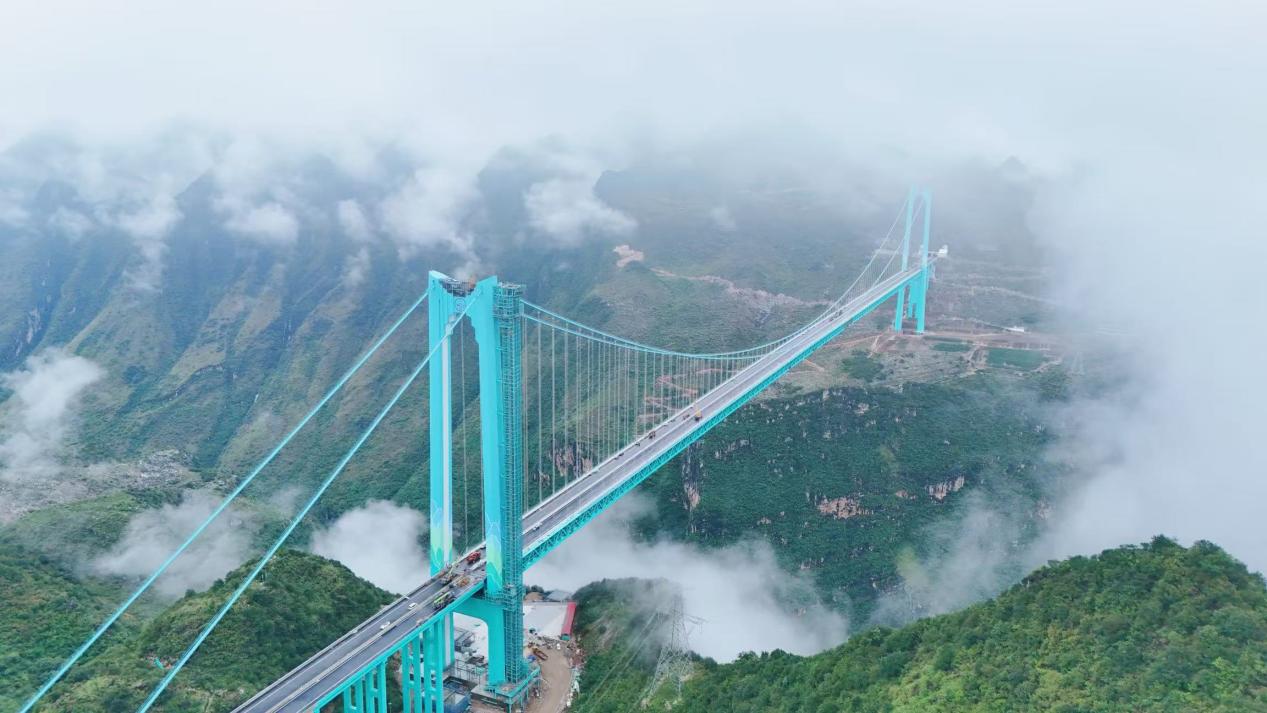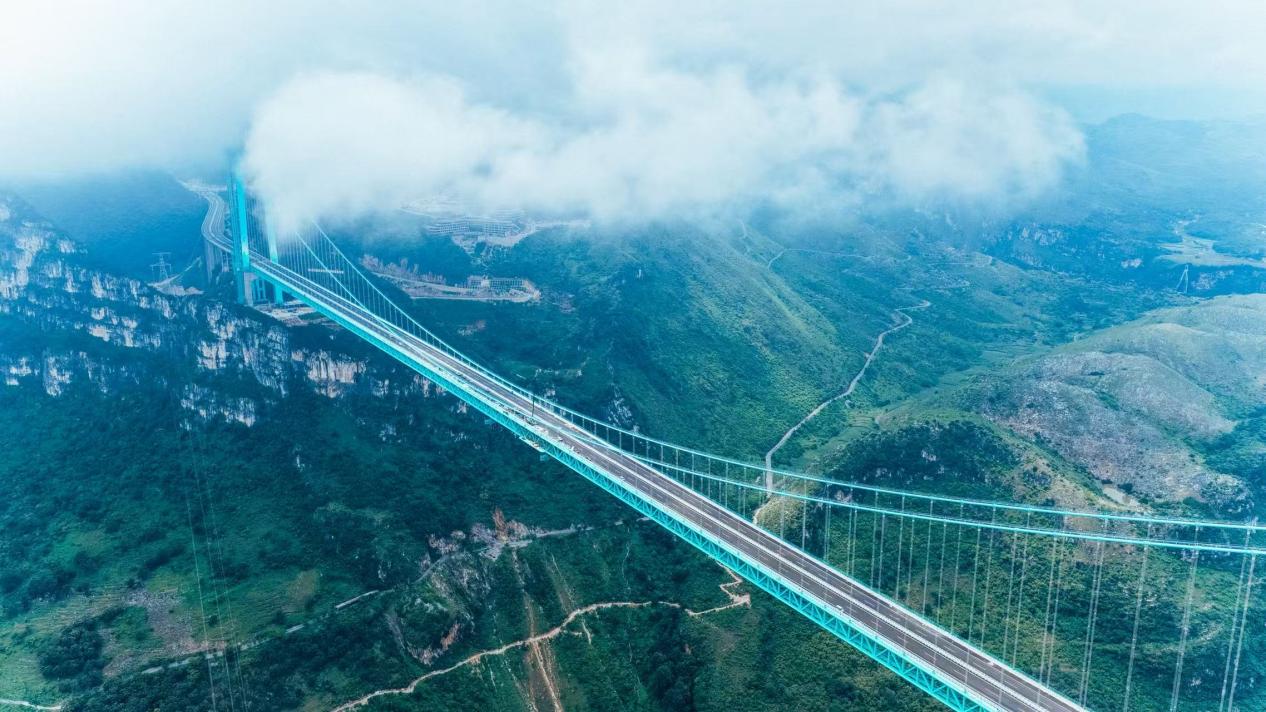In the deep gorges of Guizhou Province, a breathtaking engineering marvel has officially unveiled itself to the world: the Huajiang Canyon Bridge. This bridge is not only a masterpiece of transportation infrastructure but also a shining gem of Chinese engineering innovation.
On September 28, 2025, the bridge officially opened to traffic, stunning the world with its incredible height and span. The deck stands an astonishing 625 meters above the water, surpassing the Beipanjiang First Bridge by nearly 60 meters, making it the world’s tallest bridge. With a main span of 1,420 meters, it also ranks as the world’s longest span in a mountain bridge, truly a “superlative” in every sense.

The area known as the “Earth’s Crack” presents an extremely challenging geographical environment. In just over three years, the engineering team overcame unimaginable obstacles. The most arduous task was the installation of steel truss girders at a height of over 600 meters. This process involved 93 segments, weighing a total of 21,000 tons, and required millimeter-level precision. Using an independently developed “smart cable crane system,” the team completed the entire installation in just 73 days, showcasing impressive “Chinese speed.”

The terrain on both sides of the gorge is complex and varied, with the narrowest point being 300 meters and the widest reaching 3 kilometers. The climate here is also extremely challenging, with instantaneous wind speeds reaching up to 14 on the Beaufort scale, equivalent to a strong typhoon. To address this issue, the construction team conducted multiple physical wind tunnel tests and introduced a Doppler lidar wind measurement system to automatically collect wind field data 24/7, providing precise meteorological references for construction.

In terms of technological innovation, the Huajiang Canyon Bridge has made significant breakthroughs in wind resistance design and high-altitude construction, securing 21 authorized patents. Several of these technological advancements have been incorporated into national bridge construction standards, providing a “Chinese solution” for global mountain bridge construction.

For Guizhou Province, which is predominantly mountainous, this bridge holds great significance. It has reduced the travel time between the two shores from over two hours to just about two minutes, truly turning a natural obstacle into a smooth passage. Currently, Guizhou has built or is building over 32,000 bridges, claiming the top three spots in the world’s tallest bridges ranking and occupying nearly half of the positions in the world’s top 100 high bridges.
The Huajiang Canyon Bridge is not just a bridge but a symbol of China’s infrastructure strength. It bears witness to the wisdom, courage, and innovative spirit of Chinese engineers, demonstrating their ability to conquer nature in complex terrains. This bridge not only connects the two shores but also bridges the gap in technological innovation, showcasing China’s remarkable achievements in infrastructure construction to the world.











